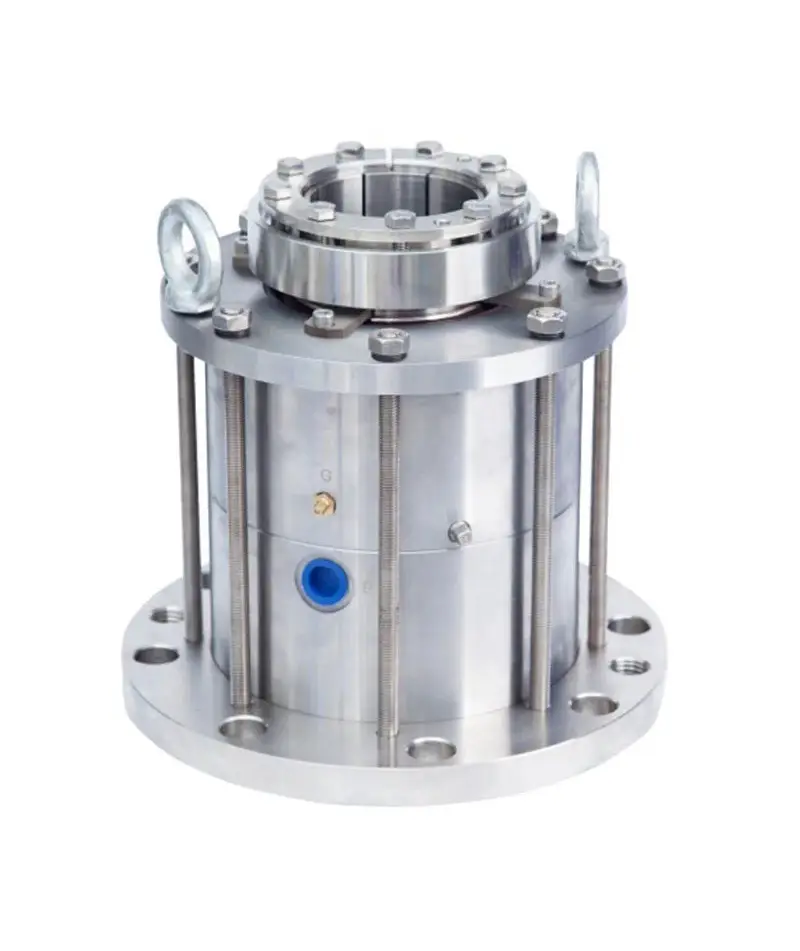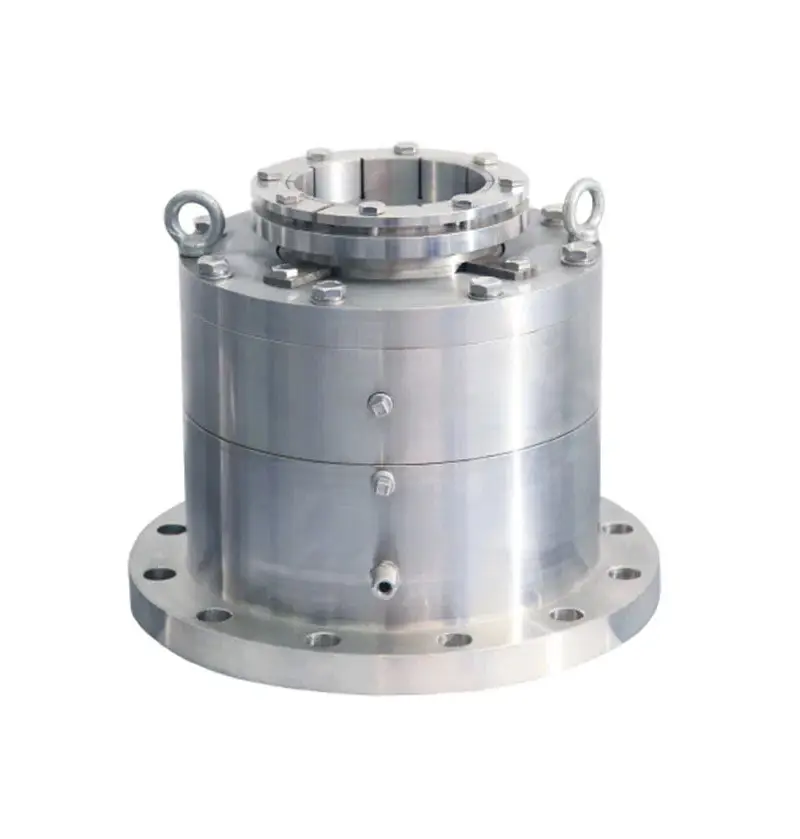Exploring Sealing Solutions for Industrial Mixing Systems
In industrial mixing applications, maintaining a controlled, leak-free environment is essential to ensure product quality, process efficiency, and safety. Agitator seals play a pivotal role in keeping materials contained and preventing contamination, especially in systems that operate under high pressure, high temperature, or aggressive chemical exposure. Selecting the right agitator seals for a specific process is not simply a mechanical decision—it involves understanding the characteristics of each type, the application requirements, and the unique operating conditions that affect long-term seal performance. From pharmaceuticals to petrochemicals, the choice of agitator seals can significantly impact maintenance schedules and equipment uptime.
Overview of Agitator Seal Categories
Single Mechanical Agitator Seals
Single mechanical agitator seals are the most basic and commonly used sealing systems. These seals rely on a single interface between the rotating shaft and stationary housing to prevent product leakage. They are suitable for non-hazardous applications and are generally used in environments with low pressure and temperature.
These agitator seals are typically cost-effective and easy to install. However, they offer limited protection against leakage and are not ideal for applications where containment or cleanliness is critical. In processes where shaft misalignment or vibration is common, single seals may wear out faster, leading to increased maintenance frequency.
Despite their limitations, single mechanical agitator seals are still widely used due to their simplicity and adaptability. For processes where leakage is tolerable or not hazardous, they offer a balance of performance and affordability.
Double Mechanical Agitator Seals
Double mechanical agitator seals consist of two sets of sealing faces and are designed to handle more demanding conditions. The space between the two seals is typically filled with a barrier fluid that can be pressurized to prevent process media from escaping or contaminants from entering.
These agitator seals are ideal for high-pressure, high-temperature, or corrosive applications where safety and product purity are paramount. They also offer enhanced protection in processes that involve vacuum conditions or frequent CIP/SIP cycles. The barrier fluid acts as a lubricant and cooling medium, extending seal life and ensuring stable operation.
Although more complex and expensive than single seals, double mechanical agitator seals provide superior reliability and are essential in applications that cannot tolerate leakage or contamination.
Specialized Agitator Seal Types and Configurations
Dry-Running Agitator Seals
In some processes, the agitator seal must function without a flush or barrier fluid. Dry-running agitator seals are engineered for such scenarios, offering face materials that can tolerate frictional heat and reduce wear during periods of poor lubrication.
These seals are often used in batch processes or during startup/shutdown sequences when fluid levels may be below the seal line. Materials such as carbon-graphite or silicon carbide are commonly used due to their low friction coefficients and ability to operate under dry conditions.
While these agitator seals are highly resilient, they must be carefully matched to the operating environment. Excessive heat or abrasive particles can still reduce their lifespan, making them best suited for well-controlled processes or where dry-running conditions are rare but possible.
Cartridge Agitator Seals
Cartridge agitator seals are self-contained units that include all necessary sealing components, pre-assembled and tested for proper fit and function. These seals simplify installation and minimize the potential for human error during assembly.
Designed for ease of maintenance, cartridge agitator seals often come with adjustable gland plates, integrated bearings, and built-in flush ports. Their modular design allows for rapid replacement, which is particularly valuable in continuous production environments where downtime must be minimized.
Cartridge seals are available in both single and double configurations and can be tailored for hygienic or heavy-duty industrial applications. Their standardized format improves reliability and ensures consistent sealing performance across systems.

Considerations Based on Process Requirements
Pressure and Temperature Demands
The pressure and temperature conditions of the mixing process significantly influence the type of agitator seals needed. For low-pressure ambient operations, standard single seals may be sufficient. In contrast, high-pressure processes involving chemical reactions or steam injection require seals with high compression resistance and thermal stability.
Seals operating at elevated temperatures must be constructed from materials that resist thermal expansion and degradation. Metals like Hastelloy and face materials such as tungsten carbide are often used in extreme environments. In some cases, cooling jackets or barrier fluid support systems are integrated to manage heat dissipation.
Agitator seals must be rated not only for operating pressure and temperature but also for cycling conditions. Repeated exposure to changing states can weaken materials and reduce sealing effectiveness over time.
Chemical Compatibility and Corrosion Resistance
Agitator seals must also be compatible with the chemical properties of the process fluid. Exposure to aggressive acids, bases, or solvents can cause swelling, cracking, or erosion of seal materials. Using chemically resistant elastomers like EPDM, Kalrez, or PTFE can mitigate these risks.
In pharmaceutical or food applications, materials must also be FDA- or USP-compliant. Corrosion-resistant metals such as stainless steel or titanium are commonly used to prevent degradation and ensure a sterile sealing surface.
For applications involving solids or suspended particles, seals may require additional design considerations such as lip protections or debris-repelling geometries. These adjustments reduce clogging and abrasion, thereby increasing seal longevity.
Maintenance and Monitoring of Agitator Seals
Preventive Maintenance Planning
Agitator seals, like all mechanical components, are subject to wear over time. Implementing a preventive maintenance strategy ensures that seals are inspected, cleaned, and replaced at appropriate intervals. This avoids unplanned downtime and product loss due to sudden seal failure.
Maintenance intervals depend on the type of seal, process conditions, and the severity of wear. In hygienic applications, seals may need to be checked after each cleaning cycle. For industrial or continuous operations, real-time monitoring devices can alert operators to changes in seal performance.
Documenting seal performance data—such as pressure trends, leak rates, and temperature fluctuations—helps identify patterns and improve future seal selection and maintenance practices.
Predictive Monitoring and Smart Technologies
Modern agitator seals can be equipped with smart sensors that detect temperature, vibration, or barrier fluid pressure changes. These sensors provide early warning signals, allowing maintenance teams to intervene before failures occur.
Integrating these monitoring systems into a plant’s central control platform supports predictive maintenance strategies and extends the overall lifecycle of the agitator seals. While the initial investment in sensor-equipped seals may be higher, the long-term cost savings from reduced downtime and improved reliability are substantial.
The use of wireless monitoring is becoming increasingly common, enabling easy access to data even in remote or hazardous locations. This innovation brings real-time diagnostics into daily plant operations, aligning mechanical reliability with digital transformation goals.
Application-Specific Seal Solutions
Seals for Hygienic and Sterile Processing
In biopharmaceuticals and food production, agitator seals must not only prevent leaks but also uphold the highest sanitary standards. These seals are constructed from materials that are easy to clean, resistant to microbial growth, and compatible with sterilization procedures.
Designs often feature minimal crevices, smooth surfaces, and self-draining geometries to avoid residue accumulation. Double mechanical seals are commonly used in these applications to maintain a controlled barrier and ensure zero contamination throughout batch production.
Agitator seals in hygienic settings also support clean-in-place (CIP) and steam-in-place (SIP) processes, providing long-term durability under thermal shock and chemical exposure.
Seals for Heavy-Duty Industrial Operations
In the petrochemical, mining, and wastewater treatment industries, agitator seals must withstand extreme pressures, abrasive particles, and corrosive fluids. These demanding conditions call for heavy-duty seal materials and reinforced structural designs.
Seals may include metal bellows, advanced face geometries, and integrated flushing systems to keep debris away from the sealing interface. Cartridge-style double seals are often used for their ease of maintenance and ability to tolerate harsh environments.
For these applications, the emphasis is on operational resilience and uptime. Choosing the right combination of materials and design features ensures agitator seals perform reliably even under the most punishing conditions.
FAQ
What is the difference between single and double mechanical agitator seals?
Single mechanical agitator seals use one pair of sealing faces and are suited for low-risk applications. Double mechanical agitator seals include two sets of sealing faces and a pressurized barrier fluid for enhanced protection against leaks and contamination.
When should dry-running agitator seals be used?
Dry-running agitator seals are used in processes where the seal may operate without fluid contact, such as during startup or low tank levels. These seals are designed with materials that can withstand temporary frictional heat.
Why are cartridge agitator seals popular in modern mixing systems?
Cartridge agitator seals offer easy installation, reduced assembly errors, and consistent performance. Their modular design simplifies maintenance and improves reliability in both sanitary and industrial applications.
How do you choose the right agitator seal for a process?
Seal selection depends on process parameters like pressure, temperature, chemical exposure, hygiene requirements, and mixing conditions. Consulting with sealing specialists and evaluating historical performance data supports accurate selection.


